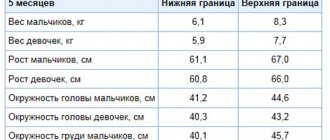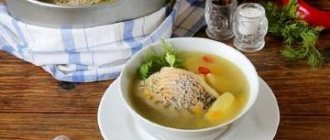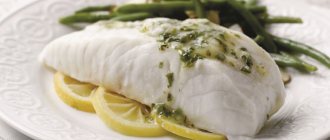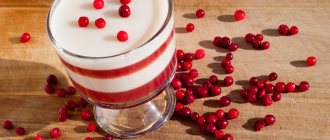Mother's milk during breastfeeding is healthy, nutritious and promotes the harmonious development of the baby. But from 6-9 months of age, the mother may have less of this nutrient fluid, and the baby’s need for food increases. At this stage of the child's development, complementary foods are additionally introduced.
Photo: depositphotos.com. Author: alexannabuts.
The main condition for baby feeding is gradualness and no rush. They begin to administer it in small doses, literally a quarter of a teaspoon, observing and recording all the negative reactions of the body (stool upset, skin rashes, poor health). By finding out your child’s taste preferences, you can enrich his usual table with many healthy dishes.
By nine months, complementary feeding already makes up the majority of the baby’s daily diet. The baby's diet becomes more varied: there is not much food in volume, but there are plenty of products that can be included in the menu.
By nine months, meat, fish, vegetables, fruits, dairy products (cottage cheese), eggs (yolk), bread (crackers, cookies, dry bread) are already introduced into the child’s diet.
For preparing meals, choose only fresh or special canned baby food products. They have a positive effect on the development of a growing organism.
The baby's diet at 9 months is based on breastfeeding or artificial feeding with ready-made infant formula. New meals are served between morning and evening breastfeeding. The diet at this age is constant - eating every 3-4 hours, 5-6 times a day.
When introducing a baby to a new product or dish, the consistency of the food is made liquid, close to the usual one. At the same time, they take into account not only the lack of chewing skills, but also the safety of the feeding process - the baby can choke on large pieces.
Over time, the baby grows up, gets stronger, and the first teeth erupt. At this point, the need for more “rough” food turns into a necessity.
Features of the diet of a 9 month old baby
A child's diet at 9 months is significantly different from what it was 30-60 days ago. The baby has already tried many products. Parents continue to introduce new dishes to the menu. Breast milk or adapted formulas remain part of the diet.
They saturate the body with vitamins and minerals, but they can no longer fully satisfy the baby’s needs for satiety and the required amount of nutrients. Therefore, formula or breast milk is given about twice a day. The main food for a child is complementary foods.
The diet of nine-month-old children has the following features:
- increasing the amount of food consumed per day;
- introduction of solid foods into the diet. Babies already have teeth. There is no need to grind all dishes. Solid food trains the chewing reflex and eliminates itching during teething.
When preparing your diet you need to consider:
- child's tolerance to certain foods. The child's body is very sensitive. Your baby may be allergic to some foods in the form of skin rashes and itching;
- state of the gastrointestinal tract. If a child has problems with the digestive system, then some foods can cause stomach pain, flatulence, colic, diarrhea, constipation;
- weight gain. If the baby is not gaining weight well, then his diet should be more nutritious and high in calories;
- product compatibility;
- baby's taste preferences.
The diet of infants and artificial babies has certain differences.
Breastfed
Regular breastfeeding has a beneficial effect on the baby's psycho-emotional state. Mother's milk has a unique composition. Pediatricians do not recommend completely giving up breastfeeding at the age of nine months.
Milk strengthens the body's defenses and stimulates the development of brain cells. It also improves the digestion of other foods. This is very important when introducing new food products.
It is recommended to give breast milk to your baby for breakfast and before bed. During the day, the child is offered complementary foods. It is allowed to give the baby a little milk after the main meal, if necessary.
Breastfed babies are more attached to their mother than bottle-fed babies. They regard drinking milk not only as a meal, but also as contact with a loved one.
Artificially fed
Children who are on artificial nutrition usually receive complementary foods earlier than infants. Therefore, by the age of nine months, their diet is more varied.
It already contains meat (babies who are on complementary feeding from 6 months are just beginning to be introduced to this product). Artificial babies continue to be given the mixture. It is offered in the morning and before bed.
If infants receive water from mother's milk, then artificial ones should be supplemented with water. A single volume of formula for children 9 months old is 200 ml. This amount may vary slightly depending on the needs and characteristics of the body.
Products in a baby's diet
From the beginning of the introduction of complementary feeding, if it was correct, balanced and, most importantly, not “under pressure”, by 9 months the child’s diet should include many dishes, the taste of which he has managed to remember and love.
As you grow older, the way food is served changes. If previously any food was ground into a homogeneous mass, now it looks more and more like an “adult”.
Methods of preparing food for a nine-month-old baby are varied: food can be boiled, served raw, stewed, steamed.
But what specific foods should form the basis of a child’s diet at 9 months?
Vegetables
Vegetable purees and stews give free rein to my mother’s culinary imagination. Such dishes are prepared from potatoes, young zucchini, carrots, cabbage, pumpkin, beets, and turnips.
The vegetables are mixed, and you can add vegetable oil, salt, and seasoning in the form of popular herbs: dill, parsley, green onions, and onions. Mash food with a fork, deliberately leaving small pieces of solid food so that the baby can practice chewing skills.
If your child doesn’t like the taste of a product, then remove it from the menu for a couple of weeks and then try again. Don't force it, be patient.
Porridge
When serving porridge, the cereal is thoroughly boiled first in water, and milk is added towards the end of the heat treatment. Add butter to the finished dish and mix well. You cannot add oil to the pan during cooking - it will lose substances beneficial to the baby. It is better to serve in semi-liquid form; you can flavor the food with a pinch of sugar or a small dessert spoon of honey.
The diet is calculated so that every day the diet includes one of the following cereals:
- barley;
- buckwheat;
- semolina;
- rice;
- pearl barley;
- oatmeal;
- Herculean.
It is not recommended to cook from millet and corn cereals, since this is too heavy food for the baby’s stomach. There is no need to grind the porridge until smooth; just rub it through a sieve once.
Some parents prefer to give their child industrial baby cereals of questionable composition.
Sour milk
Some pediatricians disagree on the age at which fermented milk products (cottage cheese, kefir) can be introduced into children's diets. Some believe that it is necessary to start at six months of age, while others believe that it is necessary to wait until twelve months. However, most agree that nine months of age is enough for a trial introduction of natural fermented milk products into the baby’s diet.
Cottage cheese from the store is not suitable for such purposes; it is either made independently from a special pharmacy mixture, or you buy special children's cottage cheese. Kefir should also be special, adapted for the baby’s stomach.
Fish
Starting from nine months of age, fish is added to the diet. They do this gradually: first they offer it together with other familiar dishes (mashed potatoes, stews, soup, porridge), then in their pure form (cutlets, meatballs).
Like any new product, fish can cause allergies (most often, indigestion). To reduce risks, it is served no more than once or twice a week.
Only freshly frozen low-fat sea fish (pollock, flounder, cod, hake) or freshly caught river fish (pike perch, carp, burbot, trout) are used. The fish is thoroughly washed, cleaned, gutted, bones, head, and skin are removed. Well-cooked, carefully ground.
Children's nutritionists recommend combining fish and vegetables. This will not only add variety to the child’s diet, but will also give him new taste sensations.
Meat
When choosing meat, preference is given to low-fat varieties: beef, rabbit, poultry.
It is served as a broth (vegetables are boiled in it), added to stews, purees, porridge, and made into cutlets, meatballs, and meatballs. But at the same time, they carefully grind it in a blender or pass it through a meat grinder, achieving the most homogeneous mass.
What's for dessert?
For dessert, the baby is prepared with homemade soft cookies or crackers and fruit puree. Fruits for baby purees must be ripe, fresh and not cause allergies in the child. They are washed well, peeled, seeds, and core removed, and doused with boiling water. Grind with a mixer until smooth and mix. If the mass turns out to be too thick, it is diluted with juice or water.
In addition to the main dishes, the diet includes liquids every day - berry or fruit compotes, jelly, herbal teas, fruit and vegetable juices, water.
What kind of jelly can be given to babies?
Now in stores you can find a lot of ready-made products for feeding babies: canned meat and fish, vegetable and fruit purees, instant cereals with numerous additives. They are convenient and can diversify the daily home menu for both breastfeeding and bottle-feeding. Using ready-made food from “jars” in the diet makes the life of a young mother full of worries easier and frees up her time to communicate with her child.
Diet of a 9 month old baby
Many nine-month-old babies are already accustomed to eating on a schedule. Feeding schedule is important for proper growth and development. If you strictly adhere to it, then there will be no problems with the digestive tract due to under- or overeating.
Also, the daily routine disciplines the child. The baby gets used to eating at a certain time. Therefore, parents usually do not have problems with feeding.
The diet of nine-month-old children has the following features:
- reducing the frequency of feedings. Such children receive food five times a day;
- no snacking at night;
- increasing breaks between meals.
Some children at nine months of age can still ask for the breast at night. It is not recommended to deny them food. Perhaps the baby did not eat enough of the previous portion. If moodiness is associated with a lack of attention, then it is better to offer water instead of the breast, rock and calm the baby.
Artificial people usually do not snack at night. Nine-month-old babies are fed every 4 hours. An approximate diet for children of this age is given in the table below.
| Type of feeding | Meal time | Nutritional Features | |
| baby | artificial | ||
| First breakfast | 6:00 | mother's milk | adapted mixture |
| Lunch | 10:00 | lure | lure |
| Dinner | 14:00 | lure | lure |
| Dinner | 18:00 | lure | lure |
| Late dinner | 22:00 | milk | formula milk |
| Late night snack | 2:00-4:00 | milk (on demand) | – |
| Total number of feedings | 5-6 | 5 | |
What can you feed your child: table of allowed foods
A nine-month-old baby can be fed most foods from an adult diet. Complementary feeding allows you to saturate the body with vitamins, proteins, minerals, healthy fats, and carbohydrates.
Food must be healthy and of high quality. The list of permitted products is given in the table below.
| Product category | List of permitted products | Notes |
| Vegetables | Potatoes, onions, zucchini, cauliflower, pumpkin, green peas, carrots, eggplant, broccoli | If your baby suffers from constipation, you can diversify his menu with beetroot dishes. The norm of vegetables per day is 200 grams |
| Fruits, dried fruits, berries | Green apples, plums, peaches, apricots, currants (yellow, black), pears, bananas, dried fruits | If the baby does not have allergies, then you can introduce gooseberries into his diet. The optimal daily dose of fruits, berries, dried fruits is 90-100 grams |
| Meat | Veal, rabbit, horse meat, pork | Normal – 60-70 g |
| Bird | Turkey, chicken | |
| Fish | Hake, flounder, pollock | It is recommended to give preference to marine fish. With normal tolerance, salmon, pike perch, and cod can be added to the diet. The daily norm is 40 g. Fish is allowed to be given to the baby twice a week |
| Dairy products | Kefir, yogurt, cottage cheese | Daily allowance for yogurt and kefir – 200 ml, cottage cheese – 50 g |
| Porridge | Buckwheat, corn, oatmeal, pearl barley, rice | You can cook them in mother's milk or formula. The optimal amount is 200 g. It is better not to give goat's and cow's whole milk to nine-month-old children. Such products are still poorly absorbed by the body |
| Flour products | homemade crackers, cookies, bread | About 10-15 g per day |
| Greenery | parsley dill | It is used boiled and added to porridges and soups. The daily norm is 5 g. |
| Yolk | Chicken or quail egg | Half a yolk per week |
| Oil | Creamy, vegetable | The norm for butter is 2.5 g, for vegetable oil – 5 ml |
| Beverages | Boiled water, juices, fruit drinks, jelly, dried fruit compote |
By nine months, children usually develop a drinking regime. Water or other drinks are offered 3-5 times a day or upon request.
Cottage cheese casserole
Cottage cheese - 250 g Egg - 2 pcs. Milk - 0.5 cup Semolina - 2 tbsp. Sugar - 1 tbsp. Salt
Pour semolina into the milk and let stand for 15 minutes so that the semolina swells. Separately, beat the eggs with sugar and pour them into the swollen semolina. Add cottage cheese and salt here. Mix everything thoroughly and pour into a baking dish, greased and sprinkled with semolina. Bake in a well-heated oven at a temperature of 200°C for 40 minutes. While baking the dish, do not open the oven, as the casserole will sink and will not turn out fluffy.
Sample menu
The menu of a nine-month-old baby should be varied, balanced, and rational. New foods should be introduced at lunchtime. An approximate menu for a 9-month-old baby is shown in the table below.
| Day of the week | First breakfast | Lunch | Dinner | Dinner | Second dinner |
| Monday | breast milk or adapted formula | Oatmeal with dried fruits, pear puree, apple juice | cabbage-pumpkin puree, turkey quenelles, jelly | Buckwheat porridge, yogurt, baby cookies | mother's milk or formula |
| Tuesday | Pumpkin-rice porridge, plum puree, fruit drink | Potato soup with chicken meatballs, peach puree, compote | Oatmeal, kefir, baked green apple | ||
| Wednesday | Cottage cheese with raisins, compote, children's cookies | Fish cutlets, vegetable soup, fruit drink, cookies | Corn porridge with apples, homemade yogurt | ||
| Thursday | Buckwheat porridge, cottage cheese, prunes, berry juice | Rabbit meat, broccoli puree, bread, juice | Rice porridge, kefir, baby cookies | ||
| Friday | Corn porridge with pear, peach puree, cottage cheese, compote | Chicken soup, pear puree, berry juice, bread | Barley porridge, crackers, yogurt | ||
| Saturday | Buckwheat porridge, cottage cheese, juice | Vegetable stew, veal meat, baked apple, fruit juice | Oatmeal, pear puree, kefir | ||
| Sunday | Pearl barley porridge, fruit jelly, cottage cheese | Fish soufflé, mashed potatoes, fruit drink, cookies | Pear puree, yogurt, cookies, rice porridge |
Cauliflower and zucchini puree
Healthy recipes
Food for a child should be healthy and tasty. It is recommended to experiment with food recipes. It is especially important to interest the baby when introducing a new product into the diet. Recipes for delicious and healthy dishes are given in the table below.
| Name of the dish | Ingredients used | Cooking algorithm |
| Apple-carrot puree |
| 1. Wash and peel the apple and carrots. 2. Boil. 3. Grind in a blender. 4. Add mixture or milk. 5. Stir. 6. Crumble the cookies |
| Soup "Joy" |
| 1. Peel vegetables. 2. Rinse the cereal. 3. Place all ingredients in boiling salted water. Cook until done. 4. Drain the water. 5. Add milk. 6. Beat with a blender. |
| Curd and meat quenelles |
| 1. Grind the meat and cottage cheese in a blender. 2. Add egg, butter. 3. Add salt and mix. 4. Form into balls. 5. Boil in a water bath. |
Apple-carrot puree
Syrniki
Cottage cheese (preferably 5-7% fat) - 200 g Egg - 1 pc. Sugar - 2 tbsp. Flour - 200 g
Mash the cottage cheese well to obtain a homogeneous mass. Add sugar and stir. Separately, beat the egg and mix with cottage cheese. Then gradually, stirring, add flour and mix everything thoroughly. You can add dried apricots or raisins to the dough for cheesecakes, but it is important that the berries are not large, otherwise they can be chopped in advance. Form round or oval cheesecakes from the finished dough and place them in a preheated frying pan with vegetable oil. Fry the cheesecakes on both sides over low heat.











